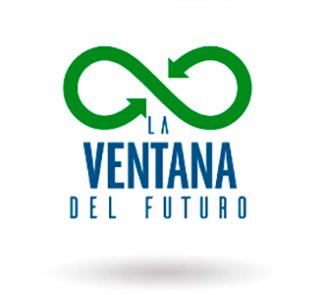Factors taken into account
These are the factors that have been taken into account in its development:
- Air permeability.
The CTE (Technical Building Code) defines air permeability as the property of a window to allow air to pass through when it is subjected to a differential pressure. In the study, class C2 and C4 windows were compared. - The thermal transmittance coefficient of the glass.
It is measured in W/m2K and the lower it is, the better the thermal insulation. In the study, values of 2 and 1 were compared. - The thermal transmittance coefficient of the window frame.
Comparatively the window opening has a much smaller surface area than the glass and is therefore presumably of less importance. Values of 3.5 and 2 have been compared. - Solar factor of the glass.
This is the percentage of solar radiation that the glass allows to pass through. The lower the solar factor, the less solar radiation enters the interior and therefore the less heat enters. Values of 0.69 and 0.5 have been compared. - Percentage of frame surface.
This is the ratio of frame surface area to glass surface area in a given opening and generally varies between 20 and 30%. The transmittance of the opening is proportional to the surface area of each element, hence the importance of this ratio. Aluminium with RPT allows smaller exposed surfaces and consequently, the transmittance of the frame would lose relative importance, with the advantage of improving the entry of light and obtaining a brighter environment.


Metodología
The study tries to simulate the conditions of a real building according to CTE and to obtain the total energy cost for all combinations of factors that can influence the thermal performance of the window in two climate zones (Zones E and A according to CTE).
Then compare simulations two by two in which only one of the above-mentioned characteristics varies. In this way a clear and isolated view is obtained of what a particular factor represents in the total energy savings.
Climate Zone E (cold)
- For climate zone E (cold zone), the most important factor is the thermal transmittance of the glass, as by lowering its value from 2 to 1 (50% reduction) we would obtain a saving of almost 12% in energy consumption. The second most important factor is air permeability, with a saving of more than 5% when comparing a class 2 window with a class 4 window.
- The second most important factor is air permeability, with a saving of more than 5% when comparing a class 2 window with a class 4 window. It is worth mentioning that the most important factor is that the window maintains its permeability throughout its service life, a characteristic strength of Aluminium windows with Thermal Break.
- In third and fourth place, although with less influence on energy efficiency, we have the transmittance of the frame and the percentage of the frame over the opening surface. In the study we observed that by installing a frame with a large improvement in its transmittance, going from 3.5 to 2 (an improvement of 43%), we only obtain a saving of 1% on the energy consumed. We obtain a similar saving by going from a frame percentage of 30% to 20% of the total opening surface, but with the advantage of a brighter environment.
- The last important factor is the solar factor, which, as it increases, increases the energy consumption of the building. This is due to the fact that the solar radiation captured by the house in winter produces savings in heating and by making it difficult for it to pass through with high solar control glass, this effect is prevented.

Climate Zone A (warm)
- The results in climate zone A (warm zone) show that the solar factor is of paramount importance, with an average saving of more than 10% when we go from a solar factor of 0.69 to 0.5. Comparing this figure with that of the cold climate zone shows the need to choose the glass according to the situation where it will be installed.
- In second and third position we have the transmittance of the glass, and the air permeability with an average saving of almost 4% and 2% respectively. Once again it is clear that, in terms of energy savings, the focus should be on the transmittance of the glass, and on ensuring that the enclosure maintains a high permeability class throughout its service life.
- In fourth position and with almost negligible savings is the thermal transmittance of the frame. This again shows that a large reduction (43%) in the thermal transmittance of the frame produces hardly any savings in energy consumption.
- In last place is the frame/glass ratio. In this case we observe a small increase in energy consumption due to the higher solar radiation input in summer through a larger glazed surface, and therefore, the increase in air-conditioning costs.

Conclusions
These are the factors that have been taken into account in its design:
- The performance of the glass is fundamental since it occupies a large part of the surface of the opening. It should also be taken into account that, depending on the area where we are or even the use to which the building is going to be put, solar control may or may not be of interest.
- Maintaining permeability is key to energy savings. There is no point in installing a class 4 window when, after a few years, it becomes a class 2 window as it loses its airtightness. Aluminium with RPT stands out in this aspect over other materials.
- The thermal characteristics of the frame have very little influence on the total energy demand of a building. When choosing a frame, the following factors should be taken into account:
- Its function as a frame
- The low permeability it ensures over its entire service life
- The large amount of light entering through a small frame cross-section
- The finish
- Burglary and fire safety.



 Download Tecnalia study
Download Tecnalia study












